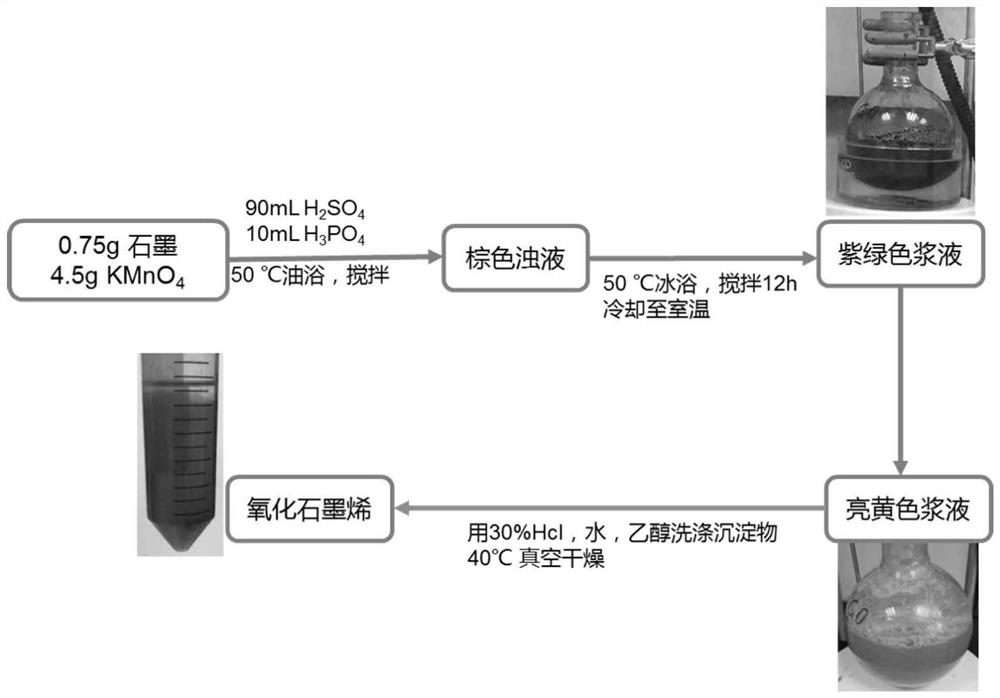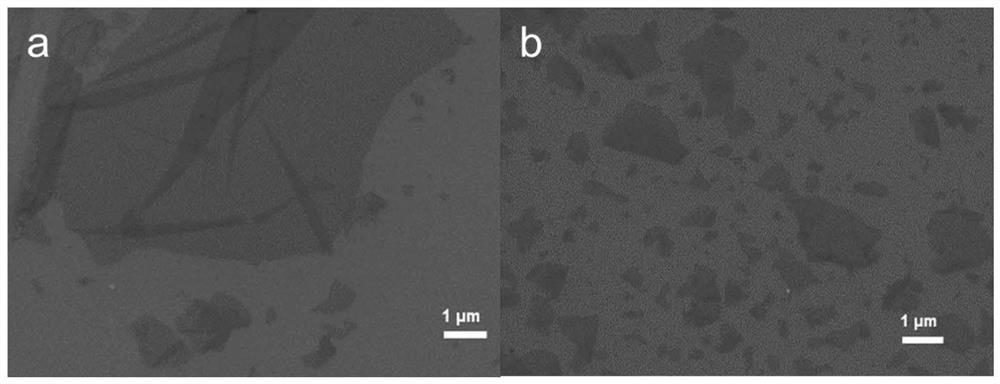An inexpensive and simple approach to enhance plasmon-driven photoreduction reactions at interfaces
A plasmon, interface technology, applied in chemical instruments and methods, non-metallic elements, ion implantation and plating, etc., can solve problems such as short life of excited hot carriers, achieve low defectivity, promote separation, Operational safety effect
- Summary
- Abstract
- Description
- Claims
- Application Information
AI Technical Summary
Problems solved by technology
Method used
Image
Examples
Embodiment 1
[0032] Adsorption of positively charged organic molecules containing benzene rings on graphene oxide enhances the method principle of plasmon-driven photoreduction at the interface.
[0033] As we all know, there is an electrostatic force of mutual attraction between positive and negative charges. Likewise, this effect also exists in microscopic materials. When in the heterostructure constructed by graphene oxide and plasma metal, charged organic molecules are adsorbed on graphene oxide by physical adsorption. From the perspective of quantum theory, when organic molecules are theoretically positively charged, electrons can be induced. Transfer, when the organic molecule is negatively charged, it can inhibit the transfer of electrons (promote the transfer of holes, because the mean free path of holes is very short, so it mainly shows the behavior of negative electricity repelling each other). Moreover, unlike the energy band structure of common semiconductors, the chargeabilit...
Embodiment 2
[0035] Fabrication of graphene oxide and plasmonic metal composite structures. Firstly, GO nanomaterials were synthesized by the improved Hummer method, as shown in the attached figure 2 As shown, monolayer GO nanosheets were obtained by ultrasonication for 30 min. image 3 shown.
[0036] The preparation method is as follows: graphite (0.75g, 4 (4.5g) were mixed evenly and placed in a 250mL single-necked flask (a magnet was placed in the flask in advance). Put the above flask in an oil bath, adjust the medium speed of the magnet and set the temperature at 50°C, and put 10mL of concentrated H 3 PO 4 with 90mL concentrated H 2 SO 4 The mixed acid solution flows into the bottle wall and is added dropwise; when the temperature rises to 50°C, react for 12 hours. After 12 hours, the above mixture was cooled to room temperature in an ice bath, at this time, the reactant turned purple-green, and then 100 mL of ice-water mixture was slowly added dropwise. Then gradually add 30...
Embodiment 3
[0040] Adsorption of positively charged methyl violet molecules enhances plasmon-mediated reduction of p-nitrothiophenol.
[0041] The composite structure of graphene oxide and silver nanoparticles was used as surface plasmon photocatalyst to catalyze the reduction of p-nitrothiophenol (PNTP) to p-mercaptoazobenzene (DMAB). Among them, the reaction rate and reaction degree are characterized by the characteristic peak of DMAB (γ N=N ) area and PNTP characteristic peak (γ cs ) Raman scattering intensity ratio The change curve with time is presented, as attached Image 6 as shown in a. When positively charged methyl violet is adsorbed on the surface of silver nanoparticles, the reaction rate of PNTP reduction is significantly accelerated, and the degree of reduction reaction is also significantly enhanced. Additionally by calculating the PNTP reduction The first few seconds to calculate the reaction rate, as attached Image 6 As shown in b, when positively charged methyl ...
PUM
 Login to View More
Login to View More Abstract
Description
Claims
Application Information
 Login to View More
Login to View More - R&D
- Intellectual Property
- Life Sciences
- Materials
- Tech Scout
- Unparalleled Data Quality
- Higher Quality Content
- 60% Fewer Hallucinations
Browse by: Latest US Patents, China's latest patents, Technical Efficacy Thesaurus, Application Domain, Technology Topic, Popular Technical Reports.
© 2025 PatSnap. All rights reserved.Legal|Privacy policy|Modern Slavery Act Transparency Statement|Sitemap|About US| Contact US: help@patsnap.com



